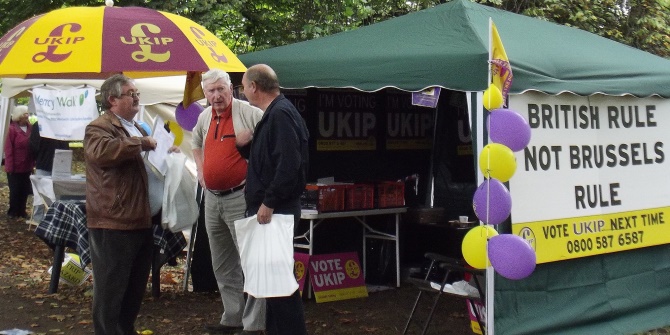 James Strong discusses the logic behind the scrapping of the 2011 Fixed-term Parliaments Act and its implications.
James Strong discusses the logic behind the scrapping of the 2011 Fixed-term Parliaments Act and its implications.
Her Majesty has signalled Royal Assent to the Dissolution and Calling of Parliament Act 2022. The Act repeals the Fixed-term Parliament Act 2011, thereby removing the constraints Fixed-term Parliaments Act (FTPA) placed on the royal prerogative power to dissolve Parliament and call a general election. Sadly, this means that the peculiar possibilities of FTPA that I identified back in 2018 no longer apply.
Under FTPA, the Prime Minister could only lawfully advise the Monarch to dissolve parliament under the following circumstances:
- To permit a general election to take place on the first Thursday in May, in the fifth May since the previous general election. Normally that would mean an election taking place every five years, though because the 2019 election happened in December the date for the next election under FTPA would have been 2 May 2024, four and a half years on from the previous election. The 2015 election was the only one held according to the five-year timetable established by FTPA.
- If 14 days had passed after the Commons had passed a no-confidence motion indicating with no alternative government capable of securing the support of a majority of MPs having emerged in the interim. This did not happen during the life of FTPA – the procedure was designed to kick in in the event of a breakdown in the Conservative-Lib Dem coalition, to allow time for re-negotiations or for an alternative coalition to be formed, but then to allow for an election if that proved impossible. The last time a government lost an explicit confidence vote of this nature was the Labour government of James Callaghan in 1979.
- If a super-majority comprised of two-thirds of all MPs (currently 434) voted for a motion ‘that there should be an early general election’. This was the procedure used to call the 2017 election.
The Dissolution and Calling of Parliament Act 2022 seeks to restore the position that existed prior to the passage of FTPA. The power to dissolve parliament remains part of the Royal Prerogative, but with the restrictions imposed by FTPA removed.
What does that mean in practice? First, the Prime Minister will regain the right to advise Her Majesty to dissolve parliament and call a general election at a time of his or her choosing. The Prime Minister no longer needs super-majority support to call an early election or to pass a special Act of Parliament to provide for an early election.
Second, if five years elapse from the date the current parliament first sat after the previous general election, it is dissolved automatically for a new election. This means that the latest date that a new election could be called is now 17 December 2024, with election day itself falling no later than 23 January 2025. Prior to FTPA, the maximum period between elections was set by the Septennial Act of 1715 (which established a seven-year maximum period) as amended by the Parliament Act 1911 (which lowered the maximum to five years). Before the Septennial Act came the Triennial Act of 1694 (as the name implies, this required elections every three years), before which there was no legal maximum period between elections (before the Bill of Rights of 1689, which limited the scope of the Royal Prerogative in the aftermath of the Glorious Revolution, the Crown could generally govern in peacetime for several years without summoning a parliament at all).
Third, the Commons has no right under the new Act to veto a decision to call an early election. The Act also includes a so-called ‘ouster clause’, which states that the courts have no power to pass judgment on the extent or application of the powers covered by the Act. There is some debate over how effective such a clause might be – the Supreme Court’s ruling in the Miller II case implied that the courts had an overriding duty to ensure the Commons is able to fulfil its fundamental constitutional functions notwithstanding the existence of prerogative powers capable of silencing it. But the courts are generally deferential where parliament has specifically stated its position in this way.
Why does all this matter? Well, the existence of FTPA made it harder for governments to call so-called ‘opportunistic’ elections, timed to align with favourable opinion polls. That, in turn, made it less likely that future elections would produce single-party majorities. So, the intention behind the new Act is to strengthen the executive, and the party currently in power in particular.
The new Act is also designed to prevent a recurrence of the parliamentary stalemate that arose in 2019, with the government unable to pass its business through parliament and parliament unwilling to agree to an early election. You will recall that one of the fundamental principles of the UK constitution is that the government must retain the confidence of a majority of MPs. Prior to FTPA, the practice was that if the government had clearly lost that confidence, it either resigned in favour of a new government, or asked the Monarch to call a fresh election. A loss of confidence could be signalled by defeat on a major policy priority, on a vote designated by the prime minister as a test of confidence, or on a vote endorsing the Speech from the Throne or the Budget. The idea was that, if the House of Commons and the government disagreed, the House could endorse a new government, or the government could appeal to the voters for support.
Prime ministers could use ‘designated’ confidence motions to pressure rebellious backbenchers, by forcing them to choose between their policy preferences and the threat of a new election. John Major used this procedure to secure the passage of the legislation required to implement the Maastricht Treaty in 1993, forcing eurosceptic Conservatives to choose between euroscepticism and the possibility of a Labour government.
Because FTPA specified what did (and therefore what did not) count as a confidence vote, Theresa May was not able to designate votes on her Withdrawal Agreement as questions of confidence. That meant that Conservative eurosceptics could vote against her Brexit deal but then turn around the next day and vote in favour of the government in an FTPA-compliant confidence vote. It’s far from clear whether this would have made a difference to the outcome. But if the threat of an election was not enough to get Conservatives to support the Withdrawal Agreement in January 2019, May could have called a fresh election in March. What happened instead – with MPs taking over the legislative agenda and forcing first May and later Johnson to extend the withdrawal process – was only possible because of FTPA.
What happens next depends on how the opinion polls develop. If the Conservatives struggle, we can expect them to delay the next election as long as possible – certainly to May 2024 but potentially all the way to the latest possible date in January 2025. If they regain a clear poll lead, however, perhaps as a result of a change of leadership, we might see the prime minister decide to call an earlier election, perhaps as early as May next year, to secure a new five-year mandate.
____________________
James Strong is Senior Lecturer in British Politics and Foreign Policy at Queen Mary, University of London.






